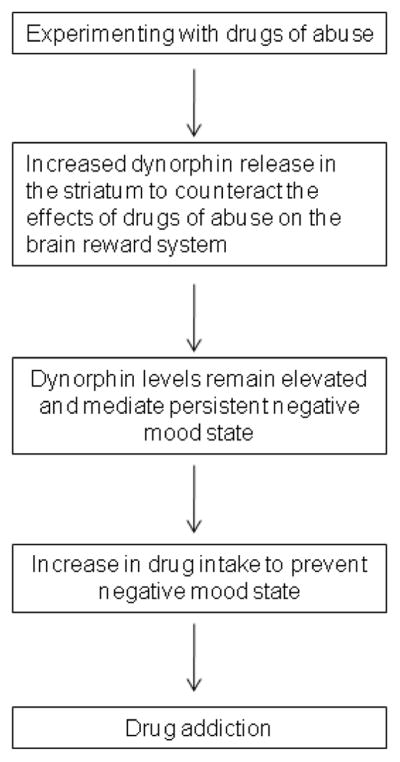Figure 1.

Role of dynorphin-like peptides in the development of drug addiction. This diagram indicates that drug abuse induces counteradaptive processes such as an increased release of dynorphin in the striatum to limit the effects of drugs of abuse on the brain reward system. Persistent elevated dynorphin levels may lead to a further increase in drug intake (i.e., negative reinforcement) to temporarily diminish the negative mood mediated by dynorphin. The perpetual cycle of negative mood states and drug intake to prevent negative mood states may lead to the development of a drug addiction (i.e., compulsive drug use and loss of control over drug intake).
